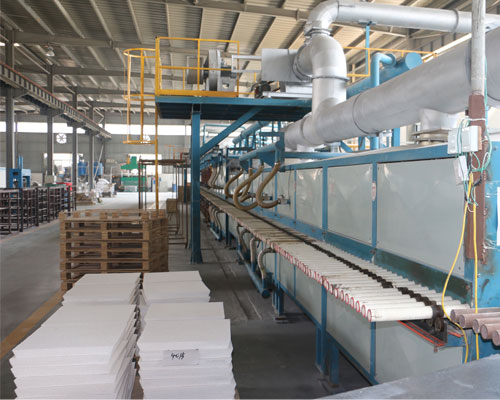The Ceramic Foam Filter for Aluminium is a very effective tool to obtain the purity of the molten metal during the casting process. It is characterized by very good thermal conductivity, stability and resistance to sudden temperature changes.
The ceramic foam filter for aluminium adopts the principle of adsorption, which can effectively remove large and small impurity particles without falling debris, effectively reducing the pollution of molten aluminum.
Excellent thermal shock resistance, improve the corrosion resistance of molten metal, can stabilize the flow of aluminum, facilitate the filling of castings, reduce slag and pinhole defects, and improve the quality and productivity of aluminum alloys.
The ceramic foam filter is surrounded by a gasket located between the filter and the filter box to prevent molten aluminum from leaking from the interface.
Our ceramic foam filter uses 2 different types of sealing gaskets, fiber cotton gaskets and expandable cotton materials.
The purification method in which the melt passes through a filter composed of neutral or active substances to separate solid inclusions suspended in the melt is called filtration.
The filtration method is the most effective and reliable method to remove non-metallic inclusions in the aluminum melt.
According to different filtering performance, the filtering method of aluminum alloy melt can be divided into two types: surface filtering and deep filtering.
According to the different filter materials, it can be divided into filter cloth mesh material, metal mesh, etc., block material filtration (such as bulk particle packing bed, ceramic filter, foam ceramic filter) and liquid layer filtration (such as flux). Layer filtration, electric flux refinement) three categories.

Among them, the simplest filtration method is glass cloth filtration, preferably foam ceramic filter plate, filter tube, deep bed filtration, etc.
Glass cloth to filter aluminum melt has been widely used worldwide, and is widely used in mold transfer processes and melt filtration.
The method has strong adaptability, simple operation and low cost, but the filtering effect is unstable. It can only intercept and remove larger inclusions and is almost ineffective for small inclusions. It is suitable for the production of steel ingots with low requirements. The glass cloth can only be used once.
Ceramic foam filtration method
The ceramic foam filter plate is made by injecting a mixture of alumina and phosphate into sponge plastic, and then drying the sponge plastic to volatilize. It can also be called a microporous mesh ceramic foam sheet with a sponge-like structure.
When the aluminum melt flows along the tortuous channel and the pores of the filter plate, the inner surface in contact with the inclusions is deposited under the action of the pores, inertia, flow force, and retention of the filter material, and maintains the surface and gap of the inner pores.
The inclusions remain in the filter material and are separated from the molten aluminum.
Foam ceramic filter plate is easy to use, good filtering effect, low price, and it is widely used in the world. Filter the molten metal with a ceramic foam filter.
The thickness of the foamed ceramic filter plate is usually 50mm, the length and width are 200~600mm, and the porosity is as high as 8%. Filtration does not require high-pressure water head, the initial size is 100-150mm, the latter only needs 2-10mm.

